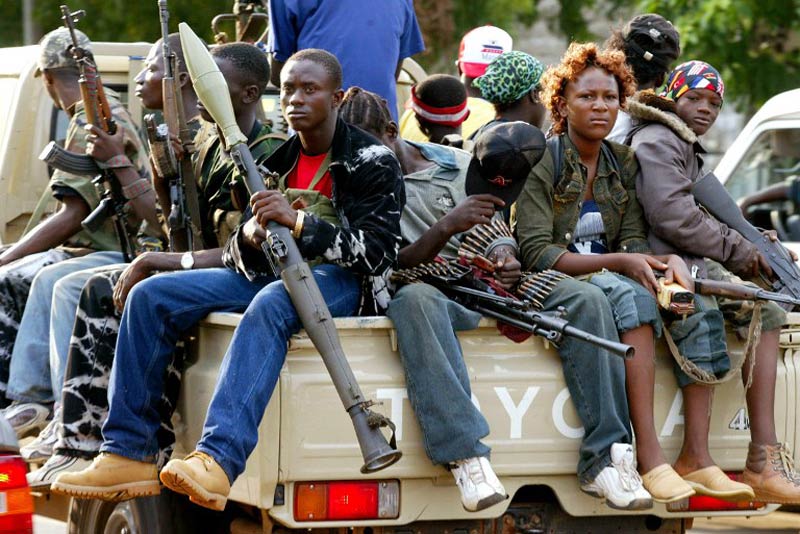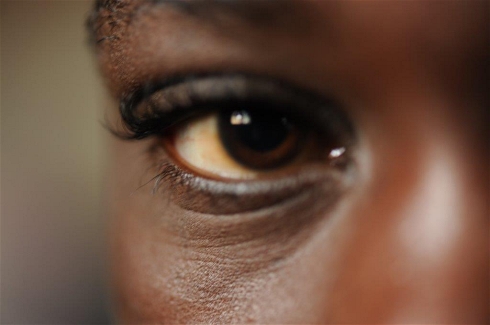Abdul Sesay used to carry an AK-47 in jailed Liberian warlord Charles Taylor’s notorious “Demon Forces” militia, which tortured, killed and raped its way through the country’s second civil war.
Now he sleeps rough, with no steady job and little chance of ever finding one, scraping together what money he can to buy the drugs that help him forget.
Sesay was one of thousands of children conscripted as fighters, ammunition carriers, cooks and sex slaves during two ruinous back-to-back civil wars which pulverised the west African state between 1989 and 2003 and killed 250 000 people.

Brutalised by conflict, the youngsters were both victims and perpetrators of the most sickening abuses, but as adults they find themselves fighting a new battle, against poverty and drug addiction.
Sesay says he was 15 when Taylor’s men came for him as he was heading for school in the northern county of Nimba.
“They abducted me on the street and bundled me into their car and later gave me a weapon to start fighting,” he told AFP.
He was placed among the ranks of the feared paramilitary anti-terrorist unit, commonly known as the “Demon Forces”, led by Taylor’s son Chuckie.
New York-based Human Rights Watch accused the brigade in 2006 of “torture, including various violent assaults, beating people to death, rape and burning civilians alive” from about 1997 through 2002.
Sesay, now 33, denies committing any rights abuses or killing anyone, saying his war involved supporting roles behind the frontline, but he admits regular drug abuse.
“It used to make me brave to keep carrying my weapon,” he says.
Now Sesay gets his money where he can, doing odd jobs and operating as a “car loader”, one of a legion of young men in central Monrovia who yell out destinations and load bags into the back of taxis.
“I am still taking drugs… I always hustle and save money to buy my drugs,” he says, scratching nervously at a baggy maroon T-shirt.
Skinned alive
Like many former child soldiers, Sesay feels abandoned by a government he says left him with nothing after he handed in his weapon as part of a demobilsation process which disarmed 103 000 rebels and government militia in 2004.
In the years since the conflict ended sympathy has been in short supply for ex-child soldiers, many of whom committed the most depraved abuses, and thousands of young men and women remain traumatised and often jobless.
Two charities, Plan and Family Health International, interviewed 98 former child soldiers for a 2009 study which found that 90% showed symptoms of post-traumatic stress disorder and 65% had a major depressive disorder.
Three in five of the girls had suffered sexual violence and a fifth of girls and boys had attempted suicide.
“The children formerly involved with the fighting forces are more aggressive and more severely affected … And we noticed that they are often blamed and stigmatised by other community members, which makes them become hostile and fight and abuse drugs,” the study said.
One young man described seeing his mother skinned alive when he was 15 while many of the girls described being taken as “bush wives” by rebels when they were as young as nine.
The Disarmament, Demobilisation, Rehabilitation and Reintegration programme (DDRR) offered $300 and training schemes to child soldiers in exchange for weapons.
But those who could not hand in a gun or ammunition were excluded, so children who had been recruited for domestic or sexual services received no help.
Michael Wilson, a social worker for Don Bosco Homes, a Catholic group which worked with child soldiers in Liberia, says many are now suffering severe trauma which manifests itself in aggression and sometimes drug-fuelled delusion.
“If you take a walk around the streets of Monrovia you will see one or two of them still portraying armed conflict, with died hair and a stick, running around,” he told AFP.
‘Saved by God’
Both the government and the main rebel groups denied the existence of child soldiers but various estimates put the total number between 15 000 and 38 000.
Augustine Tregbee fled to neighbouring Sierra Leone aged 15 as anti-Taylor guerillas pounded the coastal town of Robertsport with heavy artillery.
When he returned rebels had overrun the town, moved into local homes, taken villagers as their “wives” and made children carry equipment and weapons.
“I came back and found that my grandfather had been killed. There were no civilians here – the town was occupied by fighters,” he told AFP.
He was given a Soviet-era PKM machine gun, trained in guerrilla warfare and told he would be executed if he tried to escape.
“I saw lots of friends die in battle during an attack on Charles Taylor’s soldiers but I was saved by God,” he said.
Now 29, Tregbee is reticent to talk about how many combatants he killed but recalls vividly the 2003 siege of Monrovia, which resulted in the deaths of some 1 000 civilians in heavy shelling.
“I did not look people in the face to kill them while I was fighting. If I killed people, maybe it was through stray bullets. We did not target civilians in our unit,” Tregbee says.
Back in Robertsport he is now a fisherman whose dream of buying a boat looks unlikely to be realised with earnings of as little as $15 a month.
Tregbee along with his wife and two children rent one squalid room of a building with no windows, running water or electricity.
One bed takes up most of the space and puddles form on the hard floor when the roof gives way in the rainy season.
He says he looks to the future with optimism despite having no money, but his dark past is never far away.
“I still reflect on my days as a child fighter. Often I think about the moments of jogging with my friends, moving together,” he says.
Frankie Taggart for AFP


